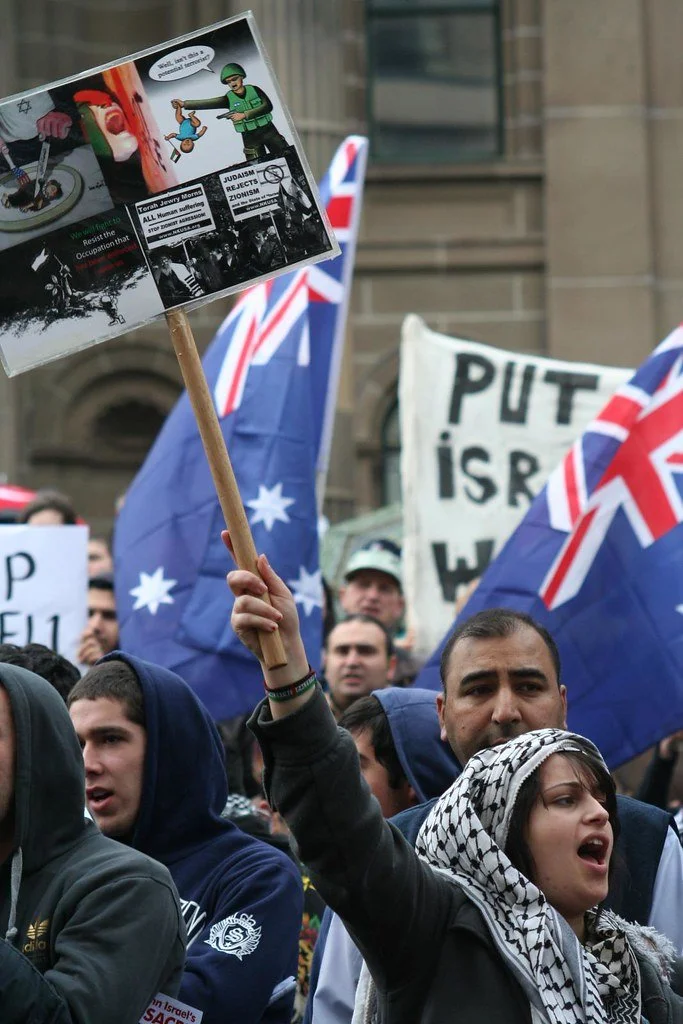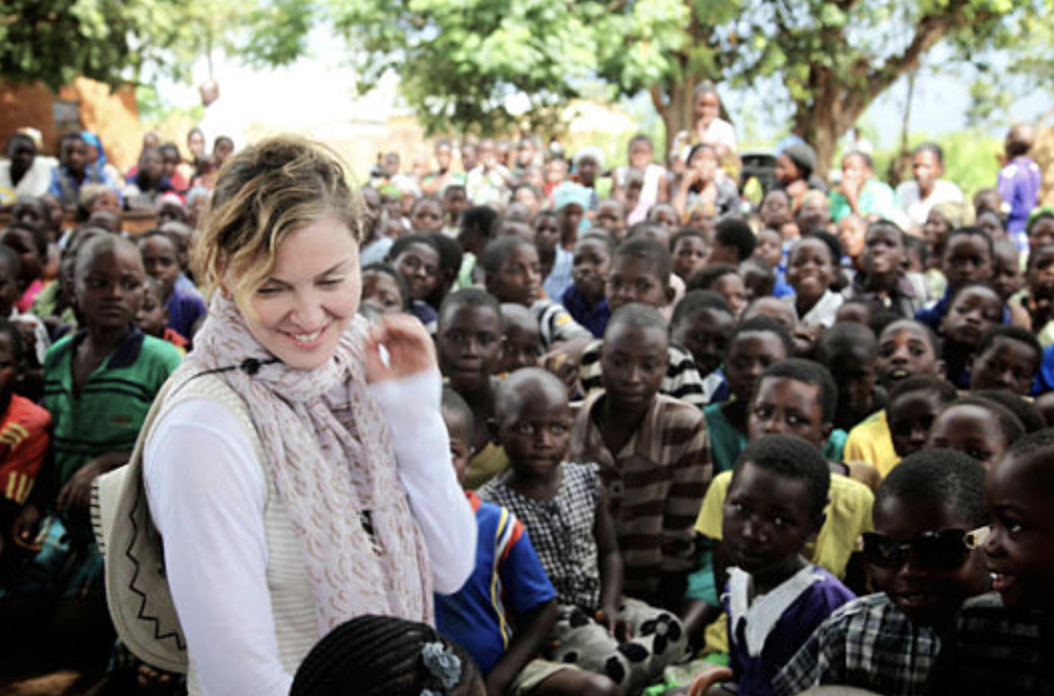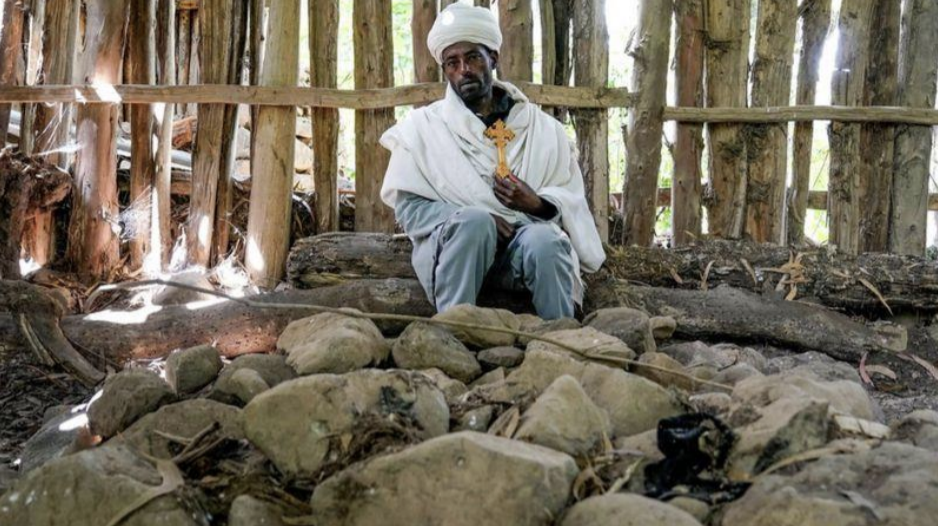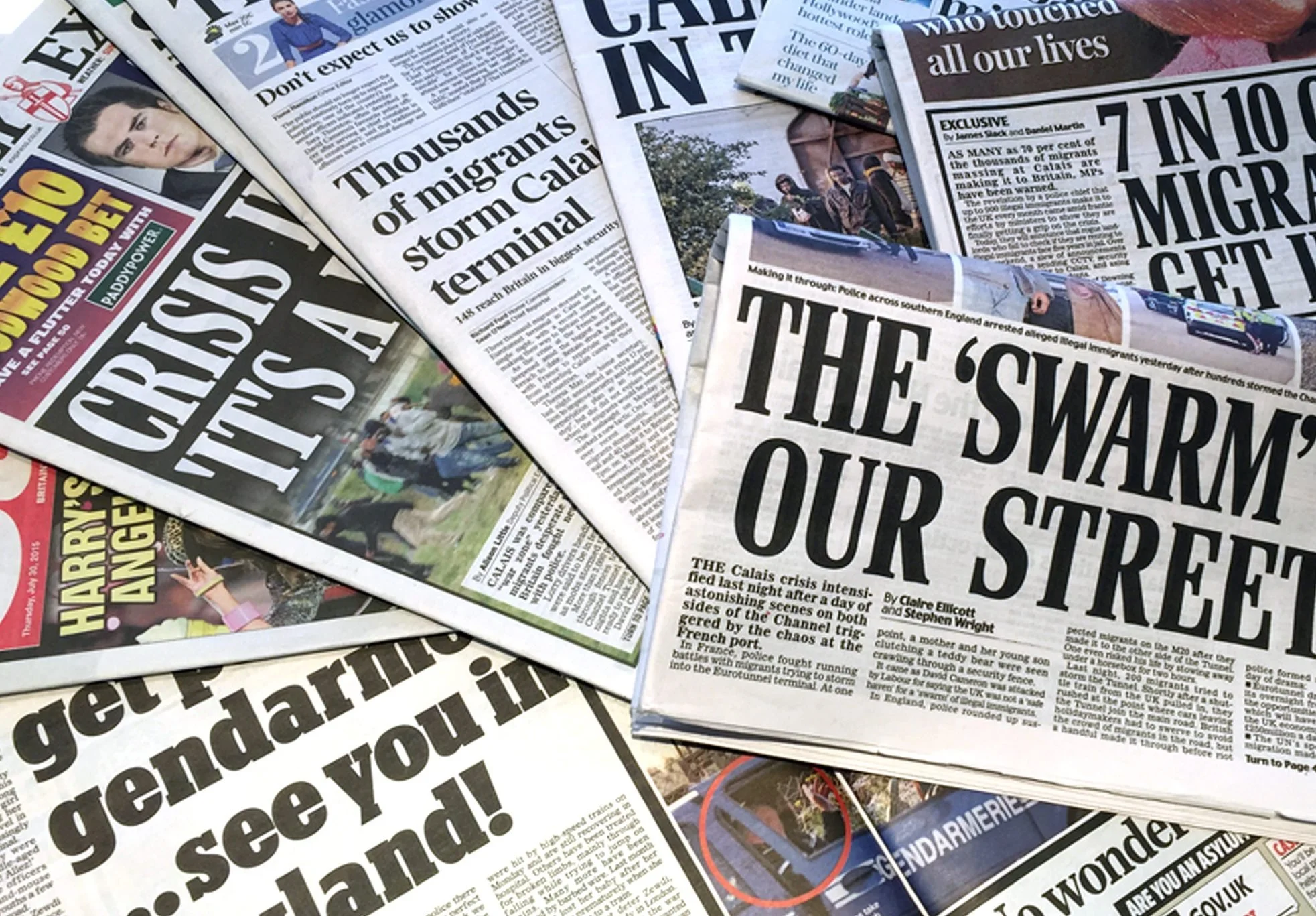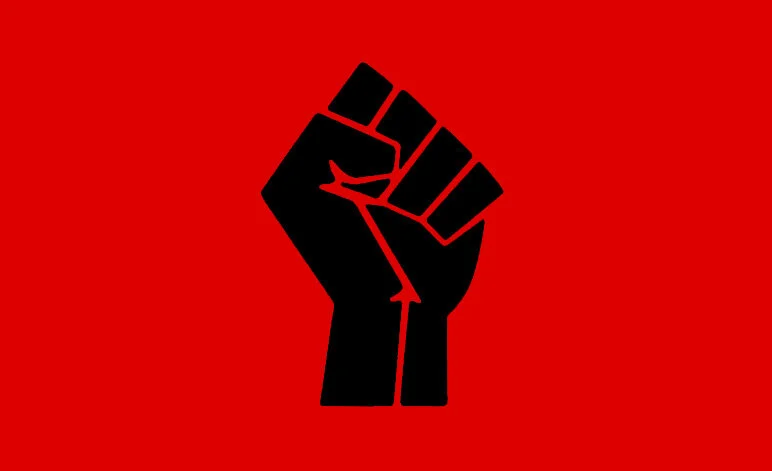From arduous bureaucratic processes to daunting language barriers, a refugee or asylum seeker resettling in a new country faces many initial obstacles. Yet in the midst of these tangible difficulties, there is a less visible, but just as prevalent, barrier: the increasing prevalence of xenophobia and extremist, anti-immigrant ideology in sociopolitical landscapes. Throughout much of Europe and the United States, there has been a rise in anti-immigrant rhetoric in reaction to refugee movements and in conjunction with the increasing prevalence of far-right extremism. This type of isolationist, ultra-nationalist ideology not only threatens the livelihood and wellbeing of migrants globally, but could also signal a concerning turn towards alt-right and populist movements inching closer to the political mainstream.
A Year of War in Ukraine: An Anniversary in Photos
When I was in early middle school I would watch whatever appeared on Netflix in my free time. Looking back on it there was a lot that I watched for seemingly no reason. I watched all of Futurama, which I remember very little of. I also watched all of the 1970s sitcom M*A*S*H, about the Korean War (which I’m still very fond of). However, most of what I watched were documentaries. It wasn’t tied to any one topic, but I watched all of Ken Burns’ documentaries, which were on Netflix at the time. One of the documentaries I watched, and still don’t remember why I did exactly, was Winter on Fire: Ukraine’s Fight for Freedom, directed by Evgeny Afineevsky.
RefuSHE
This spring semester GRMR is proudly supporting RefuSHE, an organization that aims to empower and serve refugee women and children. RefuSHE’s admirable mission includes educating, protecting, and leading refugee women to offer them a chance to grow, develop, and flourish. Refugee girls and women remain an extremely vulnerable population, with about 76% of women and children refugees in Kenya and 52% under 18.
My Family Story and Parallels to Refugee Stories Today
As is the case for many Palestinians, my family experienced lots of emigration, pain, hardship, loss, displacement, and change since the Nakba, or the Palestinian Catastrophe, in 1948. I want to share this personal account of my family's history through stories I have been told. My family's history has many parallels to what refugees and immigrants fleeing war, or those who are being forcibly displaced, may have had to experience then, and still experience now. I hope to shed light on the strength of not only my family, but all immigrant and refugee families who had to endure hardship in the past, and those who still do today.
An Increasing Issue: Human Trafficking in Migrant Populations
Human trafficking refers to the involuntary exploitation of individuals and can involve sexual exploitation, debt bondage, and forced labor. Although many may not think so, it occurs in every region. Human traffickers attempt to target marginalized communities and vulnerable individuals. Sexual exploitation, in specific, is a growing issue in refugee camps and among migrating groups. Refugees and migrants often lose their community support networks as they are forced to leave their homes and familiar surroundings. Depending on where they flee to, they may or not be citizenship status. Other resources, such as medical support, livelihood opportunities, and legal support, may not be provided. As a result of these conditions, forcibly displaced people are often easy targets for traffickers.
Violence Against Women: A Main Driver of Migration from Central America
Relocating to another country is a momentous choice. For the women and children of Central America, as with all refugees, this migration is no longer a choice but rather a necessity for survival. Since the late 20th century, turbulent political and socioeconomic conditions in the Northern Triangle- comprising El Salvador, Honduras, and Guatemala- have led to a rise in sexual and gender-based violence (SGBV). Under a system that subordinates and violates women, many view leaving the region as the sole path to a better life for themselves and their families.
Unmasking White Saviors to the Rescue
Last year I watched the film adaptation of Frank Herbert’s science fiction novel Dune about a boy named Paul who tries to protect the desert planet of Arrakis, its inhabitants, referred to as Fremen, and its valuable spice reserves from brutal Harkonnen rule. If you are like me and did not read the book you too were surprised by the amount of worldbuilding reminiscent of Islamic or Arab traditions. Ironically however, none of the main actors portray Middle Eastern/North African (MENA) or Muslim backgrounds; rather, the protagonist communicated as meant to rescue Arrakis’ largely colored Fremen population turns out to be a white male. While Dune and its characters reside in the fictitious realm the storyline is one replicated far too often in the real world.
Humanitarian Law Fails Palestine
Throughout the course of human history, war has been ruthless, often senselessly tearing apart families and livelihoods during callous power struggles between two belligerent parties who unnecessarily involve innocent people. It was not until fairly recently in human history that conventions occurred to attempt to make fighting more humane. Due to the lack of consensus on a war crime and the tendency of attacking forces to disregard human life, much less human dignity, the exact definition of a ‘war crime’ and ‘crimes against humanity’ remains elusive. Generally speaking, a war crime is a “serious violation of the laws or customs of war as defined by international customary law and international treaties,” and can apply to civilians and armed soldiers, while crimes against humanity apply to civilians (Penrose, 2022 & “Crimes Against Humanity”, n.d.).
Advancing Refugee and Migrant Health Worldwide
With the release of the World Health Organization’s (WHO) first-ever report on refugee and migrant health on July 20, 2022, comes a crucial discussion on the urgent actions that need to be taken to ensure that healthcare is accessible to all. Currently, one out of every eight people worldwide is a migrant or is displaced, and this issue continues to grow as a result of various reasons ranging from war, climate change, disease, and famine to seeking better jobs, education, and better overall quality of life. Refugees and migrants bring many skills and talents wherever they relocate to and do contribute significantly to their host country’s economy as productive members of society, yet their health is not a priority in many of these countries.
Stopping a Refugee Crisis Before it Starts in the Pacific Islands
Take out your phone, and instead of going on TikTok or playing today’s Wordle, go on your Maps app. Now scroll to the Pacific Ocean, that vast blue mass of water separating the Americas from Asia and Australia, and zoom in until you find an island. Chances are that once you do, that tiny little speck of land in the middle of the largest single body of water on Earth will have people on it. From the lush islands of Palau near the borders of Asia, south to the Polynesian fantasy vacation destinations of Fiji and Bora Bora, and north to the Micronesian atoll systems of the Marshall Islands and Kiribati, the inhabitants of the Pacific Islands are diverse in their cultures and histories but unified by the imminent struggle that they face against climate change…
Hosting Refugees: How Nations Can Help Mitigate the Effects of Forced Displacement
With the outbreak of the war in Ukraine contributing to the ever-growing refugee crisis around the world, it is important to shine a light on the many reasons why hosting refugees is beneficial, not only to the refugees themselves, but also to the countries that host them.
Dr. Craig Loschmann, a research fellow at UNU-MERIT focusing on analyzing conflict-related migration, argues that the mere economic benefits of hosting refugees outweigh the possible associated risks. His experience participating in different UNHCR-funded projects in refugee camps in Burundi and Rwanda led him to conclude that hosting refugees can help…
High-Income Country Privilege and How it Affects Refugees
The refugee crisis is one of the largest humanitarian crises in the world. That being said, before discussing how people who live in the high-income countries (HICs) (Europe and America are the main ones to note) have imposed a superiority complex disguised as heroism, it is essential to note a few things. This is a very sensitive issue and should be treated as such. Additionally, this post is a glimpse into many nations’ shortcomings in regards to the refugee crisis, so in no way is this a localized issue. This post will highlight some of the many ways people who live in high income countries have imposed a superiority complex and how it has harmed refugees and their communities, with sources all being from a refugee’s perspective….
Ethiopia: The Crisis Unfolding in Tigray
I would like to preface this post with a couple of notions. One, there are some sensitive topics that are mentioned, so discretion is advised. Two, this crisis which has been ongoing for a couple of years is one of the largest recent instances of mass genocide and is, therefore, very necessary to discuss and understand. This post will go into a detailed story of the context leading up to the civil war and the war’s effects on citizens in Tigray, Ethiopia.
Before delving into the current events that have been ongoing in Tigray, it is important to first gain an understanding as to where the conflict originated. Ethiopia has three main ethnic groups: the Oromo, Amhara, and the Tigray. The Tigray People’s Liberation Front (TPLF) ethnic minority made up the Ethiopian People’s Revolutionary Democratic Front (EPRDF), which had authoritarian rule over the country up until 2018. They were led by Prime Minister Hailemariam Desalegn, who led 27 years of repression. This led him to step down in 2018 and Abiy Ahmed was elected by the Amhara and Oromo ethnic groups, who made up most of Ethiopia’s population…
States and the Stateless: How Nationalism Drives Xenophobia and Anti-Immigrant Sentiment
Whenever I lead any educational presentation for GRMR, I like to start off by asking the group what they think of when they hear the words refugee or migrant. I encourage the group to consider the images, news stories, and identifiers they have seen in media and political discussions. Without fail, the discussion always turns to the ways in which the 2016 election and the administration which followed changed the idea of who refugees and migrants are. Asylum seekers became illegal aliens, and migration a threat to the socioeconomic success of the country. This disdain for refugees and migrants does not stem simply from a place of xenophobia or isolationism…
Europe’s Refugee Response: Poor Peripheral Vision
Take an entry level international course and you’ll likely see a PowerPoint slide or two on the “European Migrant Crisis.” It was big, it was bad, but it was 2015. Surely six years later, Europe, home to some of the richest countries in the world, would find a way to integrate the desperate refugees into their economies, or at least raise the standard of living in the “temporary” camps scattered across the eastern Mediterranean. Who could have guessed that Europe, the self-described champion of humanitarian rights, would center its efforts in mitigating the “crisis” of refugees less on increasing the standard of living and opportunities for employment, citizenship or integration and more on spending money to simply keep them out altogether…
Climate Change and Disaster Displacement
What do you imagine when you hear the term “refugees?” Many people immediately think of the displaced people fleeing their home country to escape persecution, war, and conflict. However, an invisible but just as troubling adversary can be why refugees need to flee their homes to find refuge: climate change. Climate change is defined as the change in global or regional climate patterns. In particular, these changes were made apparent from the mid to late 20th century and onwards as a result of the Industrial Revolution and the technological advances that have been made. As a result, this led to increased levels of atmospheric carbon dioxide produced by the use of fossil fuels. The consequences of climate change affect everybody around the world. However, not many people consider one of the most disproportionately affected populations of climate change: refugees, internally displaced people (IDPs), and the stateless…
Working Within the Nonprofit Industrial Complex: A Reflection
With the rise of neoliberalism and decreased government involvement in welfare, nonprofits have filled the gap to provide social services to those in need (INCITE! 2007). The nonprofit industrial complex (NPIC) refers to the eclectic collection of privatized nonprofits that provide social service, usually with financial aid from corporations and the government (Samimi, 2010). The NPIC has grown considerably in strength after the rise of neoliberalism in the 1970s due to the government’s lack of willingness to address social issues…
When There Is No “Post-” to the Trauma
A couple months ago I was scrolling through Instagram when I came across a post from a Palestinian activist’s account that read “There is no such thing as PTSD for Palestinians.” Something about that sounded off; was this individual simultaneously dismissing the mental health issues of the very same families she was advocating for? I proceeded to swipe through the thread, intrigued by such a bold claim, and came to learn of continuous traumatic stress (CTS), a newly emerging mental health conceptualization too often misdiagnosed as post-traumatic stress disorder (PTSD) …
The Pandemic and How it Fueled a Tutoring Evolution
It has been 18 months since the pandemic forced us to shut down our regular operations. During that time of panic and confusion, the previous Education Director and her team were able to come up with our online tutoring format. Within 2 months she had set up a website, a google classroom, as well as a tutoring committee in order to launch our tutoring services in a safe and effective manner. At the time, I was a freshman. I had joined GRMR just 2 months before and fell in love with the activities and the culture. The best part of working with GRMR, was meeting the students, and getting to know their different personalities. The community was so lively…
Maternal Health in the Refugee Crisis
With women making up almost half of the refugee populations worldwide, and 1 in 10 of them being pregnant (1), we should be aware of the issues that are present in their lives. These women face multiple hardships that put themselves and their pregnancy at risk. These risks show how maternal health in the refugee crisis is a major concern that must be attended to.
Pregnancy brings many changes to a person’s body throughout its different stages. During all these stages, it is of utmost importance to provide adequate access to maternal health services and low-pressure environments to ensure the safety of the mother and the child. These services provide care and social support which are important for a safe pregnancy and delivery. However, many people, such as refugees, lack access to maternal care or similar services. Without the proper resources and help, these women…

